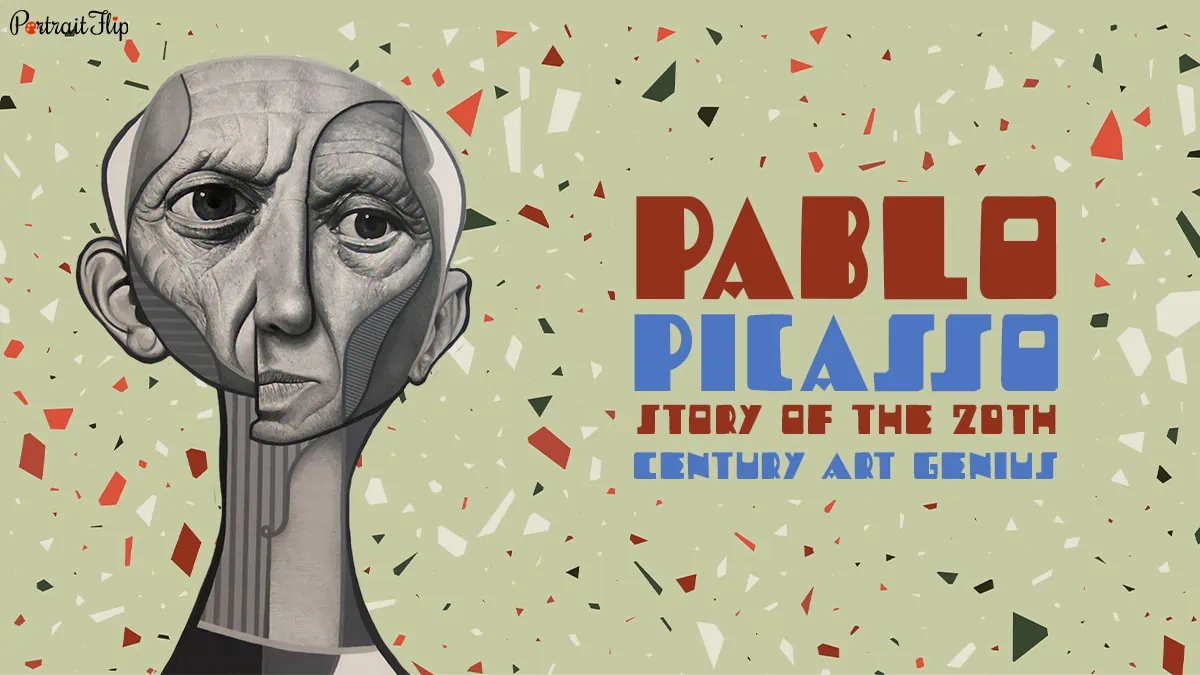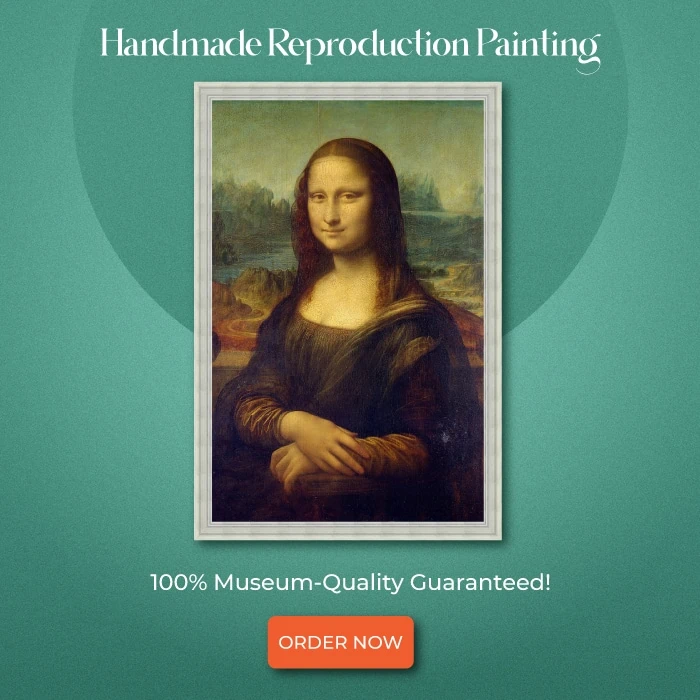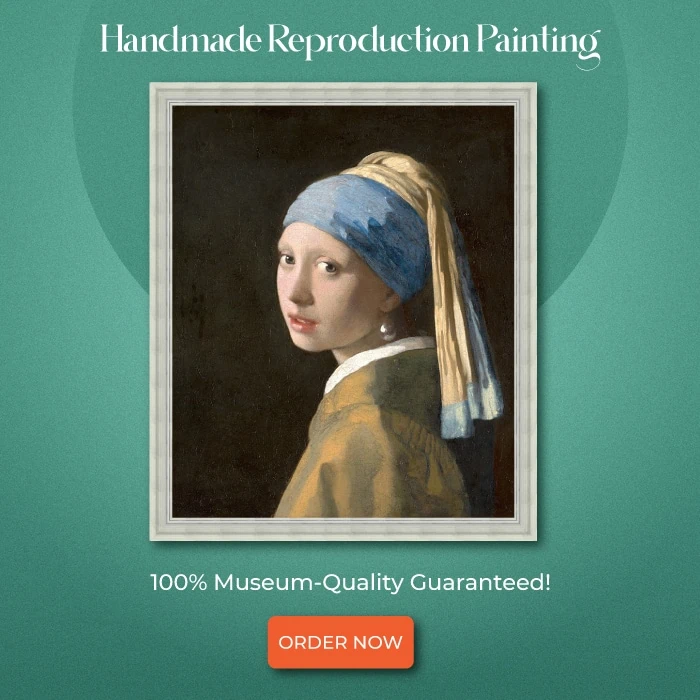“ Others have seen what is and asked why. I have seen what could be and asked why not.”
If anyone could have made this statement with utmost confidence, it is, of course, the great maestro Pablo Picasso himself.
Can there be anyone who does not know about this twentieth century phenomenal artist? I don’t think so!
Even if you are not an art person, it is impossible to not come across the name, “Pablo Picasso”!
But even as art enthusiasts, how much do we know about this extraordinary person who taught the art world to think out of the box?
We know him as the artist Pablo Picasso who created artwork like never before; whose name became a brand.
The maestro who changed the art world forever!
I hope you’re excited because I have been absolutely thrilled to curate this blog for you.
So, what exactly are we venturing into today?- The history and highlights of the infamous artist, Pablo Picasso’s life.
From Pablo Picasso’s childhood, to boyhood, despondency, love, drama and death, and above all – Picasso’s paintings– that has been a constant throughout.
If you are an ardent fan of art and appreciate the artists who have contributed so much to this world and our sanity, you are on the right page.
Let us travel through a time capsule and enter Picasso’s world of art, misery, chaos and beauty!
Table of contents
Some Interesting Pablo Picasso Facts
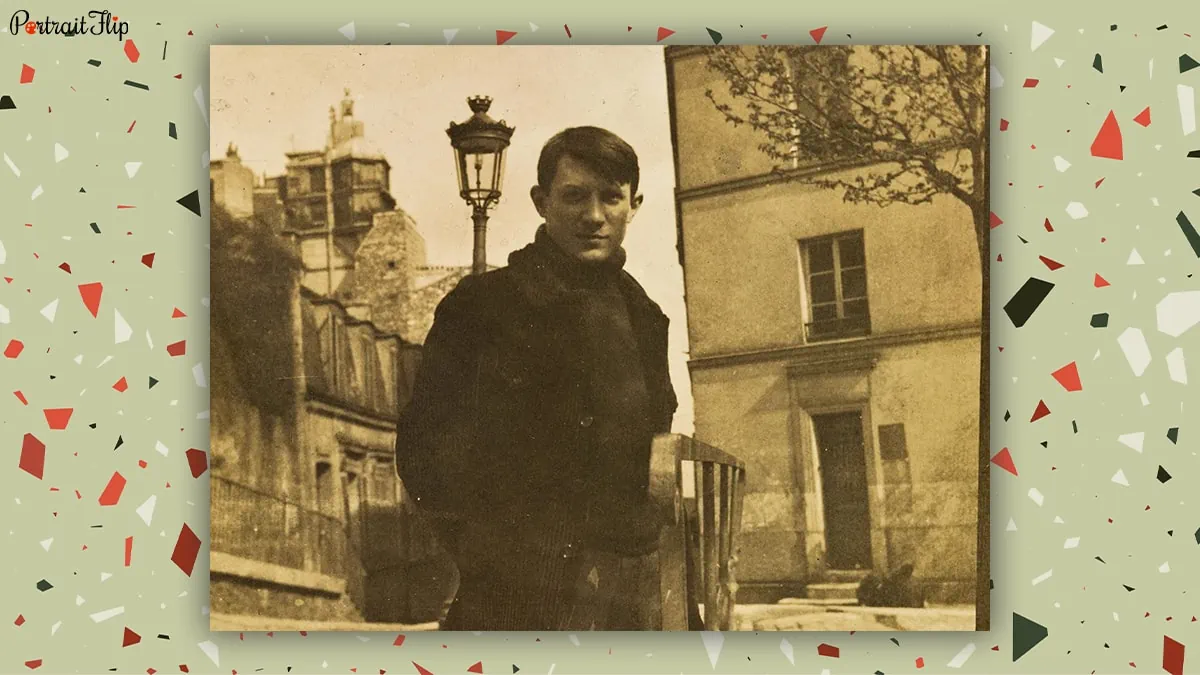
The famous Pablo Picasso has had an eventful life filled with many beautiful highlights.
And we shall go through them in detail! But before that, let us sweep through some very intriguing Pablo Picasso facts;
- When Pablo Picasso was born, he wasn’t moving, because of which the hospital staff thought he was a stillborn. It was only when he started crying after a while did they even realize the child was alive, and quickly proceeded to save him.
- How many of you know the real name of Pablo Picasso? Did you know that it is 23 words long? At his baptism, Pablo was christened with Pablo Picasso’s full name. It was Pablo Diego Jose Francisco de Paula Juan Nepomuceno Maria de los Remedios Cipriano de la Santisima Trinidad Mártir Patricio Clito Ruiz y Picasso. Phew, I think you could make a tongue twister out of Pablo Picasso’s full name!
- There are many examples which try to state that Pablo Picasso was a born artist. One of them is on the first word that young Pablo Picasso ever spoke. He said “lapiz”, which means “pencil” in Spanish. What an extraordinary child, right?
- He was suspected for stealing the infamous painting of Mona Lisa by the great Leonardo da Vinci. Although he was questioned by the police , there was nothing anyone could find on him.
- During the Louvre Museum’s 90 years celebration, the first artist to receive a unique honorary exhibition at the museum’s Grand Gallery was Pablo Picasso.
- Pablo Picasso had married twice, once to Olga Khokhlova and then later to Jacqueline Roque. He had four children from them; Claude, Maya, Paulo and Paloma. He had his daughter Maya from the relationship with Marie-Therese Walter, although she was never Pablo Picasso’s wife.
Suggested Read: About Pierre Auguste Renoir
Life Highlights of Pablo Picasso

“Learn the rules like a pro, so you can break them like an artist.”
Always wondered about the personality of the ingenious maestro?
If you are going to indulge in the biography of Pablo Picasso, you must know that his art and quotes reflect his personality.
Pablo Picasso’s art always had a mind of its own, which is why it always stood out, and continues to do so till this day!
If you’d ask me, Pablo Picasso works and his art gives me a notion that he was a natural rebel. He liked to do and create things that had Picasso written all over it.
And, well, did he not achieve that!
From his quote, we can fathom that Picasso has done a lot of learning from his life situations to have become the great artist he is known to be.
So, where do we start? Right from the beginning, of course!
Suggested Read: Famous Baroque Artists
Early Life

When was Pablo Picasso born? With the elegant arrival of fall, our artist Picasso was born on 25th October 1881, in Malaga, Spain.
His mother was Maria Picasso Lopez and his father was Jose Ruiz Blasco, a professor of drawing. Yes, Pablo was born into an artist family.
Maybe it was because his father was an artist that he noticed young Pablo Picasso’s inclination to art at an early age.
This was of course encouraged, and he started receiving training from his father at the young age of 7! During Pablo Picasso’s childhood, he had the privilege to learn and experiment under his father’s guidance.
It was as though Jose Ruiz recognized the immense talent in Picasso before anyone! He made sure that his son had all the amenities to improve his skills and showcase his talent.
In 1985, when the family moved to Barcelona in autumn, Pablo was admitted to the local art academy where he would pursue his studies to be an academic painter.
The Child Prodigy
This was also the institute where his father did his duty as professor of drawing for the last time. He was just at the young age of 10 when he joined the academy.
Within two years, in 1897, he also received an honorable mention at the Fine Arts Exhibition in Madrid.
The painting for which got appreciation was Science and Charity, in which Jose Ruiz himself modeled as the doctor.
By this, it was clear that he had already made his place among the famous Spanish artists!
Fun Fact: Did you know that artist Pablo Picasso’s father was so humbled and mesmerized by his son’s skills that he vowed to not draw again?
With his father’s persuasion, Pablo Picasso was sent to the Royal Academy of San Fernando, which was one of Spain’s best schools in Madrid.
Suggested Product: Customized Human Pencil Portraits
Pablo Picasso as a Student
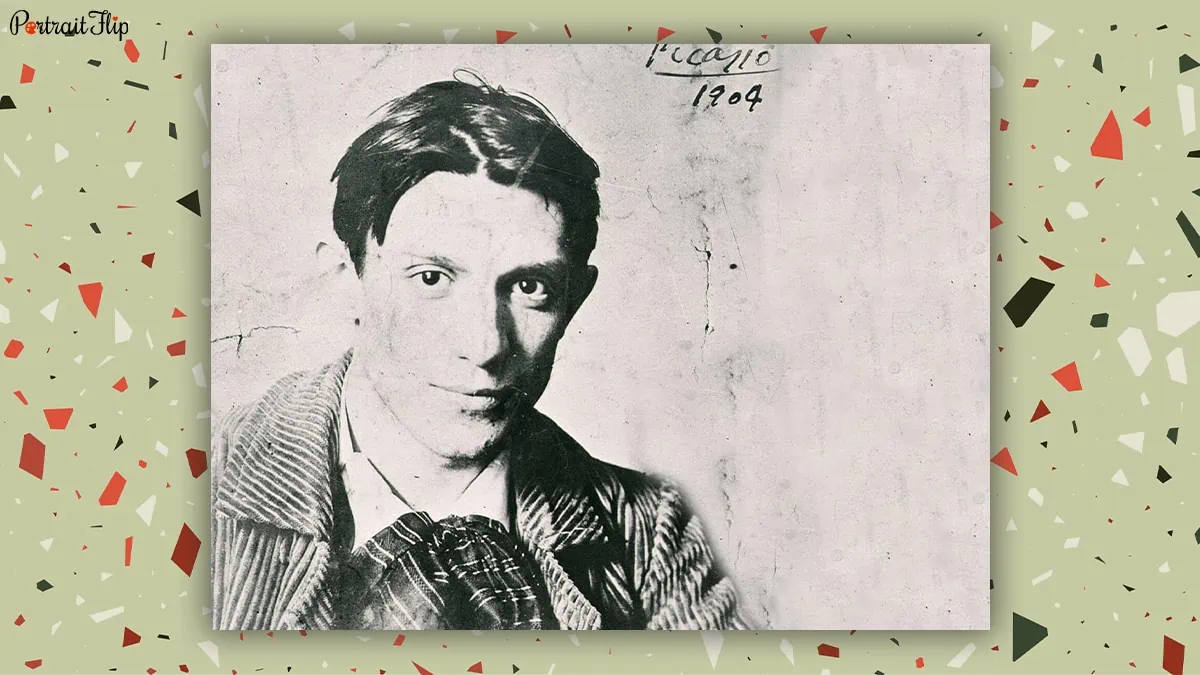
Our budding artist Picasso did not like this formal technique of learning art. See, he was a rebel from a very young age. He had a style of his own, and that had to be applied to everything!
So yes, the famous Pablo Picasso was not that great of an academy student!
That did not stop him from doing art. He continued creating art and experimenting with it. In fact, the number of paintings by Pablo Picasso crosses 20,000!
This also shows us the spectrum of his growth, right from his first painting, to his Blue Period, the Les Demoiselles d’Avignon and Picasso’s Guernica.
Soon after this, he traveled to Paris where he was influenced by several French artists and the beauty and colors of the city!
In the two months he was in this city, the magic of Paris imprinted on him and his art. His return to Madrid was the start to the next phase of his life.
To study Picasso’s lifespan, it is vital to understand his art journey. This we can do by traveling through his different ‘periods’.
What are these periods?
Picasso’s range of art is one of the most tremendous ones. To understand it better, his art was divided into periods, where his art and life resonated with one another.
Let us have a closer look at these periods now!
Pablo Picasso Periods

Why are we studying Pablo Picasso’s art and life in periods?
Wel, when a single artist has managed to create an avalanche of art from different mediums and movements, we have no other choice!
What I am trying to emphasize here is, artist Picasso has gifted the world with so much art that it is necessary to learn them in order.
Apart from this, each period in Picasso’s life has influenced his art in a certain way.
Studying these periods will also help us understand his life experiences that motivated his art.
The Blue Period

If you have gone through Picasso’s artwork, you will see some of the paintings are in all hues of blue!
Not just that, there is something about these paintings that are writhing with despondency.
These sets of paintings made between the years 1901 to mid-1904 are known to be Pablo Picasso’s Blue Period.
Did you know that it was not just his paintings that were blue, but his life too in this period?
Yes, this was a period when Picasso went through crawling poverty and depression.
His mental health channeled his suffering and pain through his paintings.
These paintings are somber in nature, they do not give out the whole meaning, but always have a looming darkness around it.
That is because these paintings reflected what Picasso experienced and witnessed in this particular period.
Couple of my favorite paintings from Pablo Picasso’s blue period are La Vie, and The Old Guitarist.
The Rose Period

Things started to slowly look better for Pablo Picasso, as he moved back to Paris permanently in 1904.
The City of Love was a good change for Picasso, and he started appreciating the change around him.
This period got known to be the Rose Period.
It is in Paris where Pablo Picasso meets Fernande Olivier, who became his lover and muse. She was a bohemian artist.
Olivier can be spotted in many of his paintings that pink, orange and red hues, which were the dominant colors of the Rose period.
It is also from this period where American writer, Gertrude Stein became Picasso’s fan and patron. She also appears in one of his very famous portraits, Portrait of Gertrude Stein.
The African Influence

Now we enter a period where one of Picasso’s most talked about artwork was produced.
In the end of 1906 and the beginning of 1907, he worked on a very unique piece that was never made before. It was called the Les Demoiselles dÁvignon.
What is so interesting about this particular painting is that it portrays five women. But all these women were shown naked, and the features were sharp and brutal.
Some works of Pablo Picasso were considered controversial pieces of art and this had to be one!
The geometrically shaped feminine bodies had some of the faces masked, which was later recognized to be influenced from African art.
This influence made the art extremely controversial as they were in reality portrayed to be prostitutes from the Avignon street in Barcelona.
Something so intriguing about this painting is that if you closely watch, you can see each of the five women looking directly at you!
Because of the controversies that it drew attention to, artist Picasso decided to keep it rolled away from everyone’s sight.
Did you know that it is his particular painting that struck Pablo Picasspo’s cubism journey?
Yes, by that we are entering his next period in life.
Suggested Read: 11 Cubist Paintings that are Enigmatic and Controversial
Cubism

“Cubism is not a reality you can take in your hands. It’s more like a perfume, in front of you, behind you, to the sides. The scent is everywhere, but you don’t quite know where it comes from. “
This is how the artist who began the Cubism movement chose to define cubism.
But what does it really mean?
Pablo Picasso’s Cubism is something that started out as an experimental abstract art, but then turned about to be a whole art movement and artistic style.
This persisted from several artists that influenced Picasso. But the movement was necessary for a new definition of art to be formed.
For instance, Kandinsky’s abstract art gave a whole new definition to Russian art.
The same way, Pablo Picasso’s experiments with art paved the way for many cubist artists that have later contributed to the art world.
The palette used in this period was monochromatic shades, usually in browns, grays and ochres. The merging of figures and shapes created a whole new illusion to the image.
Pablo Picasso along with Georges Braque worked together on cubism and believed that they were moving away from what the Renaissance artists created.
This came to be true!
With the emergence of Pablo Picasso’s cubism, opened up a whole new world of possibilities for artists of his and all coming generations.
Neoclassicism, Surrealism and Sculpture

Our phenomenal cubist artist Pablo Picasso then moves to Italy!
This is where he indulges in his neoclassical period. He started taking inspiration from other artists, both traditional and modern, to create something unique.
It is in this period that he created yet another infamous painting, the Guernica in 1937. This painting represents the ‘despair of war’, and was known to be a symbol against war by Pablo Picasso.
Although he wasn’t there for too long, Spain was still Pablo Picasso’s home country, and the wars happening then struck a chord in him and as a product he made this monumental art piece.
Guernica by Pablo Picasso painting again stirred discussions and debates on what it actually meant. It is not an easy painting to decipher and can again make the spectator wonder and speculate.
The painting was yet another famous one that is still talked about from the Pablo Picasso periods.
Artist Pablo Picasso was very closely involved with the most important literary movement of the time, Surrealism. The surrealist artists in the movement welcomed this alliance with him.
Fun fact: Did you also know that Picasso was a poet? His surrealist expressions came best through poetry!
Suggested Read: 12 Surrealist Paintings That Inspire the Artists of the 21st Century.
Were you aware that this great artist was also a sculptor?
Pablo Picasso sculptures did not gain fame until after his death because he kept them all to himself.
In 1930, artist Picasso was in Paris making sculptures with his mistress, Marie Therese Walter as his muse. He worked on large scale plaster heads then.
Some of these Pablo Picasso sculptures are still preserved in The Museum of Modern Art, New York.
Later Life
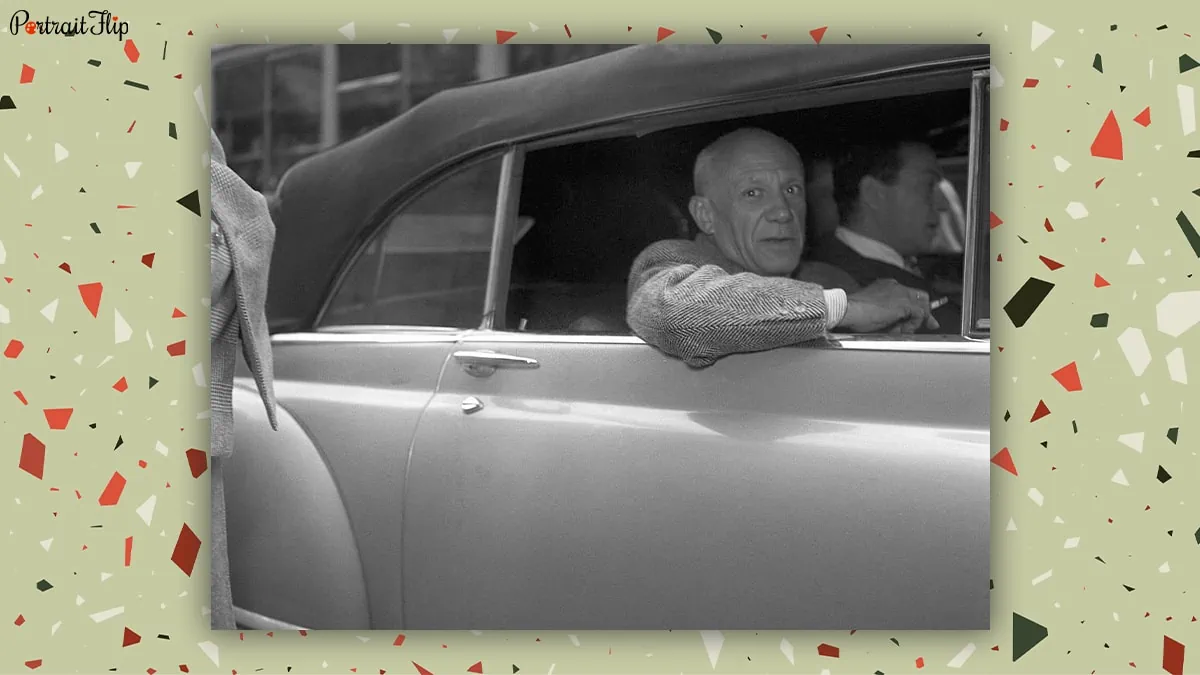
In his final years, Picasso was adamant on creating as many artworks as possible. He indulged in everything he had learnt through the years and created extravagant paintings and sculptures.
Pablo Picasso relished studying paintings of some of the great artists, who was the founder of modern traditions, like Edouard Manet, Rembrandt and Diego Velazquez.
Paintings he looked into were also known as the Old Master, because they were paintings from pre-1800 Europe.
He took inspiration from these paintings and created his own variations to it. These new variations turned out to be some of the most influential paintings that are talked about even to this day.
The paintings he created in this period was later known to be the start of the Neo-Expressionism Movement.
When Did Picasso Die?
The cubism artist took his final breath on 8th April, 1973 in France. He was at the age of 91 when Pablo Picasso’s death happened due to pulmonary edema.
He is known to have been painting until 3 am that morning, just a few hours before his death.
Pablo Picasso’s last painting that he created before his death was called “Self Portrait Facing Death”. Makes me wonder if the wise old man already knew that his end was closing in on him!
Picasso’s official resting place is at the Chateau of Vauvenargues, which is situated in the South of France.
Can you imagine how many artworks Picasso must have managed to make by the time he died?
In a span of 78 years of career, there were around 50,000 artwork across different mediums by him!
Even after Pablo Picasso’s death, the artist’s impact in the art world is irreplaceable. He gave art a new definition and is known for honoring traditionalism while being a modern artist!
Pablo Picasso’s Women and Muses

While looking at Pablo Picasso biography, it is hard to not notice the women in his life and their impact on him and his art.
If you notice Pablo Picasso paintings, a lot of the time the subjects are women.
Young Pablo Picasso was introduced to be in close proximity with the feminine from a very early age. This had a huge influence on his art and life together.
Although Picasso was married only twice, he was involved with several other women in romantic relationships.
Women in his life have been in the form of wives, mistresses and muses. Many women who Picasso has been involved with have also become the subject of his painting.
Therefore, the women in his life had an immense effect on his artwork and also influenced the change in them.
Fun fact: Did you know that Picasso painted 70 portraits of his second wife, Jacqueline Roque? This made her the woman who was painted the most times by Picasso.
There were a lot of drama, suicides and death that came along with these relationships with Picasso’s women.
But one thing is for sure, these women influenced Picasso into creating masterpieces that the world had never seen before.
One of the world’s most expensive paintings ever sold was Pablo Picasso’s Le Reve (1932), and guess who the subject of the painting was? Picasso’s favorite mistress and muse, Marie- Therese Walter.
She was only 22 years old when the painting was made and later also gave birth to Picasso’s child, Maya Picasso.
Maybe, his artwork was his way of appreciating these women? Or did he just see them as mere passing muses? What do you think?
I guess we will never know and the truth will forever be hidden within Picasso’s artwork!
The Picasso Influence

Pablo Picasso is known to be one of the most influential artists the world has ever seen!
The 20th century gifted the world with a maestro that would leave a lasting impression on every single artist that would come after.
There is a kind of profoundness you find in Picasso’s artwork that you cannot find anywhere else. Not just with Cubism, but Picasso made sure that he would influence every kind of art that he touches. And so did he!
Author’s Note
Hola Readers!
I hope you enjoyed reading the life history of Pablo Picasso as much as I loved writing it!
As artists and art admirers the least we can do is spread the information that we know about the great maestros.
If you have any queries on the post or our services please feel free to reach out in the comment section.
I will see you in the next one!
Cheers xx
Frequently Asked Questions
His first painting was Le Picador, a man riding a horse in a bullfight. He was just 9 years old when he completed this painting.
Pablo Picasso’s infamous Guernica shows the despair and downfall of war. There were speculations that Picasso created it as a message to the Nazi because he disliked the war’s impact on his home country.
Some of the museums you can visit to see Pablo Picasso artwork are Museum of Modern Art (New York), Picasso Museum (Malaga), Picasso Museum (Barcelona), Musee National Picasso (Paris), and San Fernando Royal Art Academy (Madrid).



